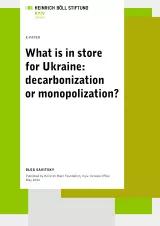What is in store for Ukraine: decarbonization or monopolization?
On 1 July 2019 Ukraine has started the roll-out of its liberalized electricity market model, in accordance to its international obligations under Energy Community Treaty, Association Agreement with the EU and the agreement on the Conditions for Future Interconnection with ENTSO-E.
Consistency and quality of new electricity market model was undermined from the beginning by the rush to launch it before the expiry of the authority of the Groysman‘s government after the defeat of president Petro Poroshenko by Volodymyr Zelensky. Previously, under Groysman and Poroshenko rule, Ukraine‘s richest man oligarch Rinat Akhmetov was enjoying exceptionally high profits for his DTEK energy company, secured by Rotterdam+ coal pricing scheme.
Outgoing politicians in their final days have distorted electricity market reform, excluding state owned nuclear power plant operator Energoatom and (in lesser extent) large hydro dam operator Ukrhydroenergo from the emerging competitive market by introducing Public Service Obligation: a duty to sell electricity at regulated low cost to the state enterprise „Guaranteed Buyer“. This provided a way to subsidize low prices for households, while leaving lucrative part of consumer base — industry and businesses — to be reaped by DTEK monopoly, especially in Burshtyn Energy Island — where over 90% of electricity is produced by DTEK.
Product details
Table of contents
- Short background on electricity market restructuring in Ukraine
- COVID-2019 pandemic as smokescreen
- Ukrainian civil society concerns, views and proposals
- Complementary historic background: How extractive colonial attitude of European private capital towards Ukraine laid the foundation for current crisis
